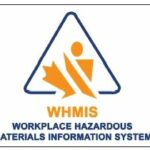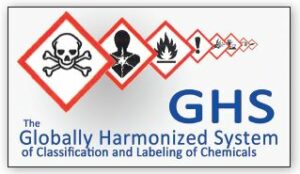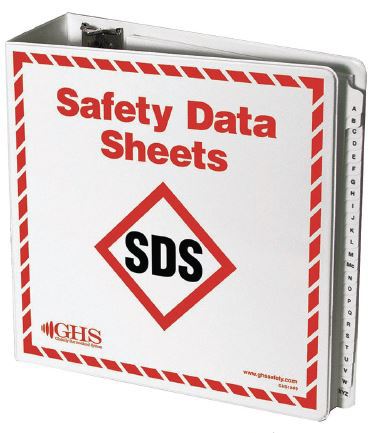Written on: March 1, 2023 by Cassandra Taylor
Back in 2021, I wrote an article for SPRAY concerning Canada’s proposed amendments to the the Hazardous Products Regulations (HPR) and Schedule 2 of the Hazardous Products Act (HPA), which sets out the requirements for the Workplace Hazardous Materials Information System (WHMIS) in Canada. Two years later, I can finally return to discuss the implementation of this long-anticipated amendment.
On Jan. 4, 2023, Health Canada published the Regulations Amending the Hazardous Products Regulations (GHS, Seventh Revised Edition)1 and the Order Amending Schedule 2 to the Hazardous Products Act2 in the Canada Gazette, Part II.
The purpose of the amending regulations is to align Canada’s WHMIS with the Seventh Revised Edition, and certain provisions of the Eighth Revised Edition, of the Globally Harmonized System of Classification & Labeling of Chemicals (GHS). The changes are being implemented to enhance protection of workers by requiring more comprehensive and detailed health and safety information on product labels and Safety Data Sheets (SDS).

The regulations came into force on the date that they were registered, Dec. 15, 2022, which also marks the start of the three-year transition period for implementation. Starting Dec.15, 2025, all Canadian SDS will need to comply with WHMIS 2022.
Changes to aerosol classifications
To align with the more recent GHS revisions, Canada will be doing away with the “Flammable Aerosol” designation in favor of the “Aerosol” hazard categories. In addition to Aerosol 1 and Aerosol 2 classifications for aerosols that are considered flammable, the Aerosol 3 category will now be adopted for non-flammable aerosols. Previously, under WHMIS 2015, aerosol  products were categorized as “Gases Under Pressure.” However, alignment with GHS Revision Seven will mean that the “Gases Under Pressure” classification need not apply to products classified as Aerosols. The criteria for determining the Aerosol Hazard category are not changing.
products were categorized as “Gases Under Pressure.” However, alignment with GHS Revision Seven will mean that the “Gases Under Pressure” classification need not apply to products classified as Aerosols. The criteria for determining the Aerosol Hazard category are not changing.
Changes to other classifications
The “Chemicals Under Pressure” Categories 1, 2 and 3 have been adopted from the GHS Eighth Revised Edition. It is worth noting that aerosol products cannot be Chemicals Under Pressure. Additionally, Chemicals Under Pressure are excluded from the Flammable Gases, Gases Under Pressure, Flammable Liquids and Flammable Solids categories.
Chemicals Under Pressure are liquids or solids that are pressurized with a gas at a pressure of 200 kPa or more at 20°C / 68°F, and that are packaged in a container other than an aerosol dispenser. The sub-categorization of the pressurized chemical depends on the mass percentage of flammable ingredients and the materials heat of combustion.
The flammable gas categories have been further sub-divided in accordance with GHS Seventh Revised Edition. New definitions have been added for Chemically Unstable Gas, Flammable Gas and Pyrophoric Gas. Flammable Gas Category 1 is becoming more granular, with new sub-categories that must be considered. Category 1 will be divided into Subcategory 1A and 1B, where Subcategory 1A can also be further subdivided into Chemically Unstable Gas A, Chemically Unstable Gas B and Pyrophoric Gas, depending on the physical properties. Test data takes priority over calculated data for classification. If the calculation method is used and it is determined that the product is a flammable gas, but further subcategorization is not possible, then it is required to take Category 1A as the “worst case” classification.
Test methods
The test criteria for Skin Corrosion have been changed to refer to “at least one animal” instead of “at least one of three animals” to reduce the amount of animal testing required for classification. References to test methods have also been updated, now referring to the most recent edition of the standard. For example, ISO 10156:2010 references have been updated to ISO 10156:2017. Several references from the “Recommendations on the Transport of Dangerous Goods: Manual of Tests & Criteria” have also been revised according to the newest version.
Other key changes
The amendment expands the allowable concentration ranges for hazardous chemicals disclosed on the SDS. In addition to being able to use the “true” concentration or one of the specified concentration ranges, it has been clarified that it is acceptable to use a concentration range that falls “entirely within” one of the concentration ranges set out in the HPR.
Various provisions have been clarified to reflect the intended meaning of the HPR. For example, various health hazard definitions now indicate that symptoms must occur following “exposure to a mixture or substance.” Previously, exposure was not addressed in the hazard definitions. The criteria for determining the subcategory of Skin Corrosion and Eye Irritation classifications have also been defined in more detail.
Changes to product labels will be needed in situations where the product classification has changed because of new classification criteria, test methods or the adoption of new hazard classes. Similarly, Section 2 of the SDS will need to be updated with the revised label elements, where applicable. Other updates to the SDS format will include changes to the Section 9 physical properties: The Appearance field is removed; Physical State and Color are added and there is also a new field for Particle Characteristics. The provision relating to transport in bulk has been repealed, and therefore this Section 14 information element becomes optional. The SDS header will also need to be updated to reference the newest version of the regulation.
How to ensure compliance
The good news is that companies will have an additional year to comply with the new requirements compared to the previously anticipated two-year transition period. The Government of Canada has implemented a three-year transitional period ending Dec. 14, 2025. Currently, SDSs and labels created according to both WHMIS 2015 and the new WHMIS 2022 requirements are compliant.
It is recommended to review your SDS for updates to chemical data and classification information at minimum every three years. The implementation of WHMIS 2022 is a good opportunity to check your documentation and ensure that the safety information for your products is up to date and compliant. Many SDS-authoring software providers are diligently working on solutions for the new requirements, which we can expect to see released over the next year. In the meantime, keep in mind that SDSs and labels must be updated within 90 and 180 days, respectively, of “significant new data” becoming available, such as product reformulations that can affect the product safety information.

It is recommended to review your SDS for updates to chemical data and classification information at minimum every three years.
The WHMIS 2015 Technical Guidance on the Requirements of the HPA and HPR3 has been an invaluable resource to assist suppliers with WHMIS GHS compliance, even detailing the parts of the regulations that are variances in contrast with the U.S.’s OSHA HazCom 2012 requirements for hazardous workplace chemicals. Although we have not heard anything yet from Health Canada about a WHMIS 2022 guidance document, this is something we will certainly be watching out for over the next couple of years as suppliers begin transitioning to the new regulatory scheme. Feel free to contact us at Nexreg for all your WHMIS 2022 compliance questions. SPRAY